Artillery ammunition: increasing accuracy and range
The ceremony of Nammo presentation of its 155-mm Extreme Range projectile, equipped with a ramjet engine, increasing the flight range to 100 km. This projectile can be a factor that changes the rules of the game in artillery.
If you add a long range here, it is clear how valuable this type of projectile is for artillerymen and commanders. The main disadvantage is the cost of guided ammunition compared to unmanaged. However, it is not entirely correct to make a comparative assessment of individual projectiles. It is necessary to calculate the total cost of impact on the target, since in some situations it may be necessary to make significantly more shots with standard projectiles, not to mention the fact that the firing task may not be possible with unguided projectiles or shorter projectiles.
The Excalibur IB guided projectile is widely used in modern military operations. At the moment, more than 14000 such shells have been fired
Increasing accuracy
Currently, the main consumer of guided munitions are the US military. In combat operations, the army has shot thousands of such shells, in turn, the fleet also seeks to obtain such capabilities. Although some programs were closed due to cost problems, for example, an LNAP (Long Range Land Attack Projectile) XRUMX-mm projectile, designed specifically for firing from an Mk155 AGS (Advanced Gun System) cannon mounted on a Zumwalt class destroyer DDG 51 The American fleet, however, did not abandon attempts to find the guided projectile itself for AGS itself, as well as for its 1000-mm Mk127 guns.
The company BAE Systems is working on numerous programs in the field of artillery. Among them are High Velocity Projectile, which can be fired from rail cannons and standard guns.
The US Marine Corps is ready to launch the MTAR (Moving Target Artillery Round) program, which may begin in 2019 in order to deploy ammunition capable of hitting moving targets without a GPS signal at distances from 65 to 95 km. In the future, extended-range guided missiles will also remain in the interests of the US Army, which is launching the ERCA (Extended Range Cannon Artillery) program without replacing 39 barrels of 52 caliber with XNUMX caliber in their existing systems, which in combination with extended-range projectiles will double their current long range.
Meanwhile, Europe is also following these trends, and while many companies are developing long-range projectiles and projectiles, European armies are looking at these munitions with interest, and some expect to put them into service soon.
It would be right to start with the most widespread 155-mm Excalibur projectile, because in combat they were shot over 14000 pieces. According to Raytheon, Excalibur IB, currently mass-produced, retains the characteristics of the original projectile while reducing the number of components and cost, and showed reliability over 96%, even in challenging urban areas providing 4 meter accuracy at maximum distances of almost 40 km when shooting from tools length 39 calibers. In the 2019 budget for the year, the army asked for money to buy Excalibur 1150 shells.
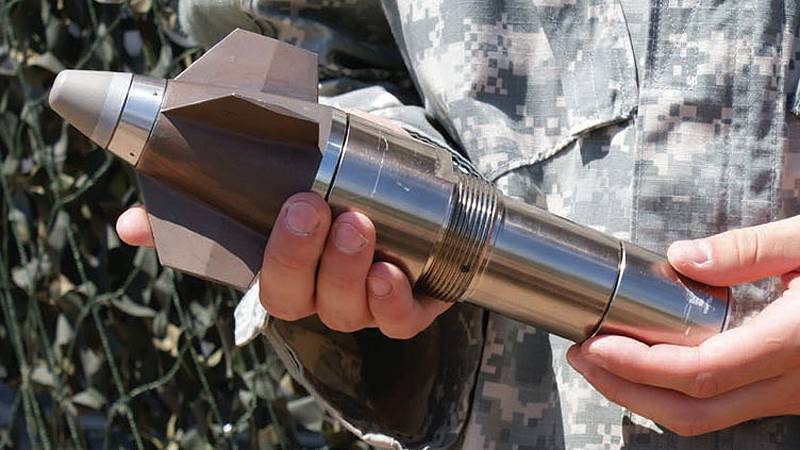
A PGK (Precision Guidance Kit) development kit from Orbital ATK is screwed onto an 155-mm artillery shell instead of a fuse, the GPS system and nasal rudders make it highly accurate
Dual Mode Homing Heads
Although the current version is a bestseller, Raytheon is far from resting on its laurels. By improving its systems, the company is close to identifying new solutions that can cope with more complex scenarios and new threats. GPS signal jamming was tested in several directions, resulting in a new version of the projectile with improved anti-jamming capabilities and dual-mode guidance. The new Excalibur S ammunition will be guided both by GPS signals and by means of a homing head (GOS) with laser semi-active homing. The company is discussing with its potential customers its final configuration, with specific deadlines not yet called.
Another dual-mode version is being developed with guidance on the final segment of the trajectory. He does not yet have a name, however, according to Raytheon, in terms of the degree of development, he is not far behind the “S” variant. Also considered a variant with multimode GOS. Guidance is not the only component that can develop. The army set out to dramatically increase the range of its barreled artillery, in connection with which Raytheon is working on advanced propulsion systems, including bottom gas generators; in addition, new combat units, for example, anti-tank, are on the agenda. This could be a response to the already mentioned MTAR Marine Corps project. As for the US Navy, in the summer of 2018, another demonstration firing of the 127-mm version of the Excalibur N5, compatible with the Mk45, was conducted. The fleet requires a range of 26 nautical miles (48 km), but the company is confident that they will be able to reach or even exceed this figure.
Raytheon is looking at the export market with interest, although the possible orders here will be substantially less than in the USA. Excalibur is currently being tested with several 155-mm artillery systems: PzH200, Arthur, G6, M109L47 and K9. In addition, Raytheon is working on its compatibility with Caesar and Krab SAUs.
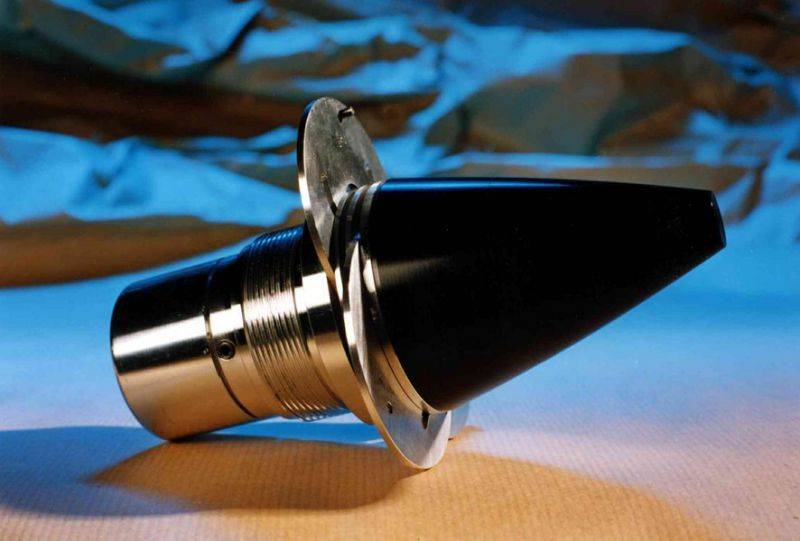
Recently, the Nexter's Spacido programmable aerodynamic brake qualification has been completed to significantly improve accuracy.
No data is available on the number of 155-mm ammunition equipped with the Orbital ATK’s (M1156 PGK Precision Guidance Kit) precision precision guidance kit (now Northrop Grumman) and used in combat. Although the first production batch was released in February of this year, over 25000 of these screw-on systems based on GPS guidance was manufactured. Two months later, the Department of Defense issued to Orbital ATK a contract for 146 million dollars for revision of the projectiles, which allows PGK to be extended to April 2021.
PGK is screwed onto the projectile instead of the standard fuse, a GPS antenna (SAASM - Selectively Available Anti-Spoofing Module, anti-interference module with selective accessibility) is integrated in the nose, four small fixed oblique nose stabilizers and a remote fuse are installed behind it. Programming is performed using the EPIAFS manual fuse installer (Enhanced Portable Inductive Artillery Fuse-Setter - an improved portable induction artillery fuse installer), the same device is connected to a computer when programming an Excalibur projectile.

Using its experience in the development of PGK and sniper ammunition, Orbital ATK is developing the PGK-Aft 127-mm naval shell, since the targeting element is installed in its tail section (English, Aft)
The shells are bigger and better
Based on its experience with the PGK, Orbital ATK is currently developing a 127mm projectile fleet on guided ammunition for the Mk45 gun. The company, on an initiative basis, wants to demonstrate to the fleet the capabilities of the new PKG-Aft shell with regard to accuracy and range.
Some details are known about this device, but the name, for example, suggests that it is installed not in the nose, but in the tail section (aft -tail) of the projectile, while the technology for overcoming overloads in the gun barrel is taken directly from the PGK system. The basis of this solution with a tailing guidance device was taken from a study conducted by ATK in conjunction with the DARPA Office for the 12,7 x 99 mm EXASTO cartridge (Extreme Accuracy Tasked Ordnance - the ultimate accuracy cartridge). The tail element will also have a rocket engine, which will increase the range to the required 26 nautical miles, and a homing engine with guidance in the final part of the trajectory will ensure accuracy of less than one meter. There is no information on the type of GOS, but the company stated that "PGK-Aft supports various advanced GOS and firing tasks of firing direct and indirect fire with all calibers without major modifications of the gun system." The new projectile is also equipped with an advanced warhead with ready-hit elements. In December, 2017, the company Orbital ATK, conducted successful combat shooting of the PGK-Aft 155-mm prototypes and is currently developing an 127-mm high-precision projectile with the PGK-Aft kit.
BAE Systems is working on a PGK-M (Precision Guidance Kit-Modernized) suite, aiming to improve maneuvering qualities while improving anti-jamming capabilities. The latter is achieved through GPS-based navigation in combination with a stabilized rotation pointing unit and an antenna system. According to the company, the circular probable deviation (CEP) is less than 10 meters, the projectile can hit targets at high angles of attack. After completing more than 200 tests, the projectile is at the stage of developing subsystems. In January, 2018, BAE Systems received a contract to finalize this kit to the serial sample. The PGK-M kit is fully compatible with 155 mm M795 and M549X1 munitions and M109X7 and M777X2 artillery systems.
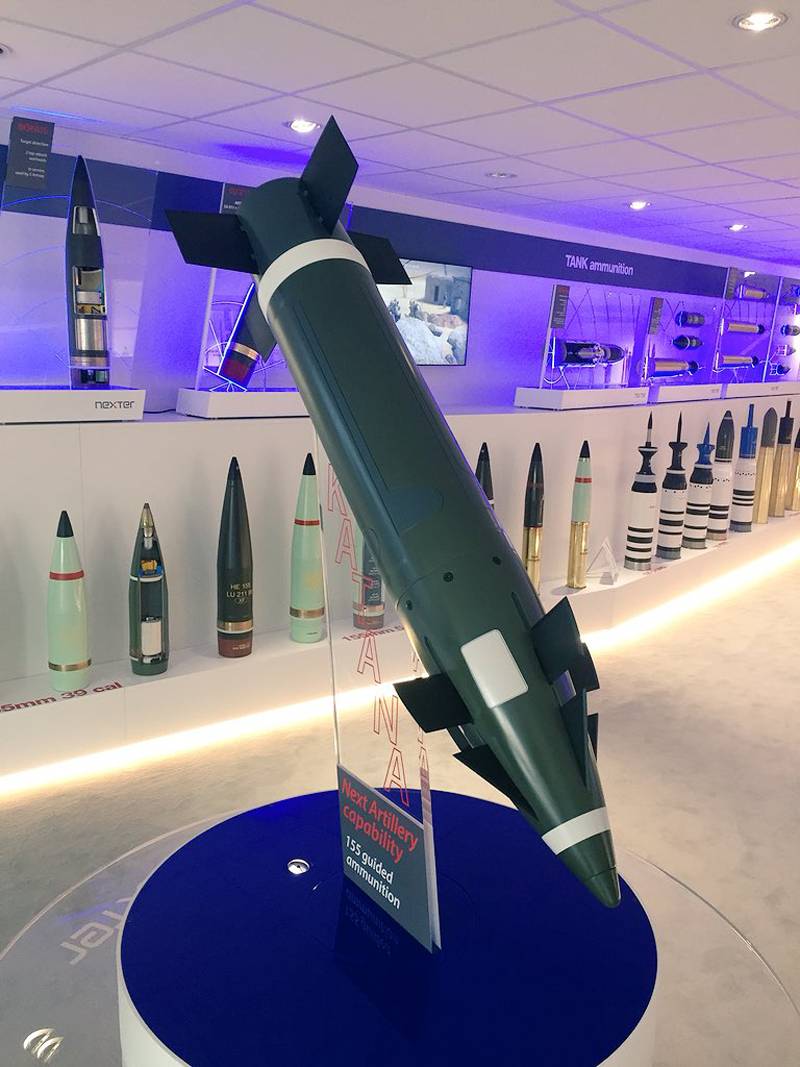
In the future, the second member, Katana Mk2a, equipped with wings that will double its range, will appear in the Nexter Katana family; however, the laser-guided version will be developed only after the military has filed an application
Aboard the american cruisers
After the decision to close the project on the LRLAP (Long Range Land Attack Projectile) projectile created for the AGS (Advanced Gun System) 155-mm gun mount, it turned out that no projectile is suitable for this gun without modification. In June, 2017, the company BAE Systems and Leonardo announced cooperation in the field of new high-precision systems based on new modifications of the Vulcano family for various weapon systems, including AGS and Mc45 ship guns. The memorandum of understanding between the two companies provides for the development of all artillery systems, but each under a separate agreement. At the moment, an agreement on two ship guns has been signed, but in the long term, ground systems, for example, M109 and M777, may become part of the agreement. In the summer of this year, the BAE-Leonardo group conducted firing from the Mk45 cannon with a Vulcano GLR GPS / IMU projectile to demonstrate their compatibility. The US Navy has a need for precision-guided munitions and is very interested in long-range projectiles, and the Vulcano projectiles meet both of these requirements.
The Vulcano family is close to completing the qualification process, conducted in parallel for naval and ground ammunition, respectively, caliber 127 mm and 155 mm. In accordance with the intergovernmental agreement between Germany and Italy on the managed option and the Diehl Defense semi-active gos integration solution from Diehl Defense, the GLR (Guided Long Range) variant qualification process is funded equally by the two companies, while the unmanaged BER (Ballistic Extended Range) option is funded entirely by Italy. All operational tests have been completed successfully and Vulcano ammunition is currently undergoing safety tests, which should be completed by the end of 2018. Meanwhile, the company Leonardo began production of the installation batch, which will prepare for mass production and adopt the final configuration of the projectiles. The launch of full-scale production is scheduled for the start of 2019.
Leonardo has developed for the 127-mm and 155-mm cannons a family of Vulcano extended-range guided munitions that are in the final stage of qualification
In 2017, the 127-mm Vulcano GLR was fired from a modified 127 / 54 gun onboard the Italian ship; and at the beginning of 2018, the projectile was shot from a new 127 / 64 LW gun mounted on the FREMM frigate. For the first time, this projectile was fed from a ship magazine of a revolving type into a gun-mounted unit, programmed with an induction coil built into the gun, to which data from the ship’s combat control system were fed; thus, full system integration was demonstrated. As for the ground version, these shells were shot from the self-propelled howitzer PzH2000, programming was done by means of a portable unit. At the moment, Germany is not seeking to integrate this system into the PzH2000 howitzer, since a certain refinement of the semi-automatic loader system is required. In Italy, shells were also tested with a FH-70 155 / 39 towed howitzer.
The increase in the range of Vulcano projectiles is realized by means of a subcaliber solution; a pallet sealing the projectile in the barrel was used. The fuse can be installed in four modes: shock, delayed, temporary and air disruption. BER shells can shoot at a range of more than 60 km, while GLR shells can fly 85 km when firing 127-mm cannon and 70 km when firing 155-mm / 52-caliber guns (55 km from 155 / XNX) In the nose of the projectile GLR set fuse, then four steering surfaces, correcting the trajectory of the projectile, followed by a block GPS / IMU. Projectiles for ship guns can be equipped with an infrared GOS, while shells fired at ground targets are equipped with a semi-active laser GOS. These heads slightly increase the aerodynamic resistance, minimizing the range to a minimum. Although at the moment the configuration is actually accepted and the tests confirmed the predicted range and accuracy, Leonardo is working to reduce the laser-guided output of the laser-guided version under an additional contract and is confident that it will cope with the new requirements. This revision will be accepted for all Vulcano projectiles; the company expects to produce one version of the projectile with a semi-active seeker.
In addition to Italy and Germany, the Netherlands has an observer status in the Vulcano projectile program, and several other potential customers, including South Korea and Australia, are considering buying them. Recently, the Slovak company Konstrukta-Defense has signed a cooperation agreement with Leonardo to promote Vulcano ammunition and integrate it with its artillery systems, for example, Zuzana 2 155 / 52.
TopGun high-precision artillery blaster developed by Israel Aerospace Industries
Nexter goes to the 3-world
Nexter Ammunition has begun an evolutionary program in the field of 155 mm ammunition, which provides for the development of elements of ammunition manufactured by 3D printing. The first step was a high-precision projectile Bonus. Spacido path correction kit was the next step. In the summer of this year, the company said that all the shooting was successful, the qualification was completed and it was left to issue certification documents.
Spacido spin-on instead of fuse is an aerodynamic brake that reduces error in range. A small Doppler radar checks the initial speed and controls the first part of the trajectory, the radio frequency channel provides data transmission to Spacido, whose computer decides when the brake should turn, reducing scattering by three times. In fact, although the Spacido device, which is protected from interference, costs twice as much, it can significantly reduce the consumption of projectiles and fire at targets that are in close proximity to their forces.
At Eurosatory 2018, Nexter announced a new family of high-precision, extended-range 155-mm artillery shells, called the Katana. The development of new shells was carried out under the Menhir program, which was announced in June 2016. It was launched in response to customer needs for increased accuracy and range. First of all, the French army needs precision for what it calls "urban artillery." The shell under the designation Katana Mk1 in the bow has four rigidly fixed wings, followed by four corrective steering wheel, connected to the block IMU-GPS guidance. All wings, including tail rudders, unfold after leaving the barrel projectile. Currently, the projectile is at the stage of technological development. The first shooting was carried out under the control of the Office of Defense Procurement. The goal of this program is to provide the army with a guided projectile with a KVO of less than 10 meters and a range of 30 km when shooting from a barrel of 52 caliber length. According to the schedule, the Katana Mk1 projectile should appear on the market in two years. The second step will be to increase the range to 60 km, this will be achieved by adding a set of folding wings, the location of which could be seen on the model, exhibited at Eurosatory. They will provide lifting force at the descent section, which will double the range. Nexter intends to surpass the capabilities of other competitors projectiles regarding the combination of range and warhead, but at a lower cost set in 60 thousand euros. The projectile, designated Katana Mk2a, will be available around 2022. After two years, when the need arises, Nexter will be able to develop an 155-mm laser-guided projectile Katana Mk2b with a meter QUO.
In addition to increasing range and targeting, Nexter also develops new combat units using new materials and 3D printing
Nexter is also working on warhead technology using 3D printing and aluminum material consisting of nylon filled with aluminum dust. This will allow you to control the radius of damage in the event of a shelling of a target in close proximity to its forces. The companies today have begun research on opto-pyrotechnic technologies in order to control the initiation of an explosion through optical fiber; All these studies are still at the initial stage and will not be included in the Katana projectile program.
Israel Aerospace Industries is ready to complete the development of its TopGun artillery blaster. A screw-on system that performs trajectory correction at two coordinates reduces the CEP of a conventional projectile to less than 20 meters. The range with such a fuse is 40 km when firing from a gun with a barrel length 52 caliber, guidance is carried out by the block INS-GPS. The program is currently at the qualification stage.
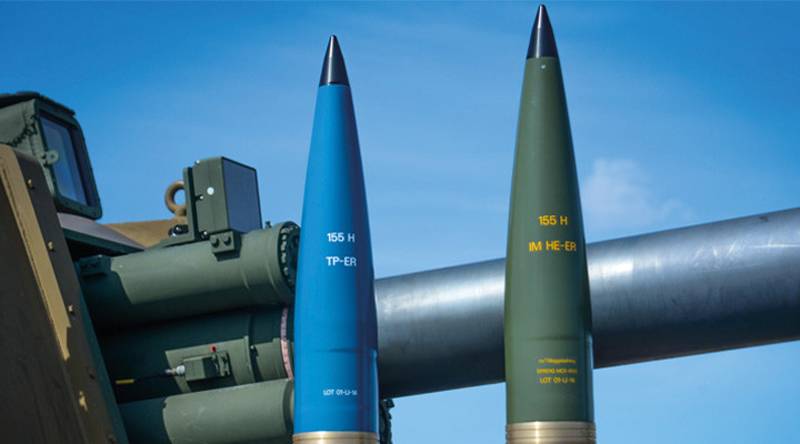
Nammo has qualified its extended ammunition family. The first customer was Finland, which will soon begin their tests at its K9 Thunder 155 / 52 ACS.
On the Norwegian side
The Norwegian company Nammo recently signed the first contract for its extended-range 155-mm artillery. Based on their rich experience, they developed a special module-bottom gas generator. At the same time, the processes of production of small-caliber high-precision ammunition were used in order to minimize the deviations of the material and form, which, as a result, entails minimizing changes in the air flow and the distribution of mass.
The program was partially funded by the Norwegian Defense Property Authority, but Finland became the first customer to sign a contract in August of 2017, the execution of which will be shooting tests scheduled for the 2019 year. Compared with standard 155-mm projectiles, an insensitive high-explosive fragmentation projectile can fly 40 km when shooting from a barrel with a caliber of length 52. Nammo is waiting for an order from the Norwegian army.
Close view of a 155-mm projectile with Nammo Extreme Range ramjet engine. The key component in it is an aerodynamic propulsion system and therefore no sensors are installed in the nose of the projectile.
The company Nammo decided to use a radically new technology, integrating a straight-through jet engine in the 155-mm projectile program Extreme Range. The ramjet engine, or ramjet engine, is the simplest jet engine, since it uses forward motion to compress incoming air without engaging an axial or centrifugal compressor; there are no moving parts in this engine. The required minimum initial speed is 2,5-2,6 Mach numbers, and the standard 155-mm projectile leaves the barrel with a 52 caliber at a speed of approximately 3 Mach number. The ramjet engine is, by its nature, a self-regulating engine, maintaining a constant speed regardless of flight altitude. The speed of the order of 3 Mach is maintained for about 50 seconds, while the thrust is provided by the fuel NTR3 (concentrated hydrogen peroxide) with additives. Thus, the range of the projectile with a ramjet increases to more than 100 km, which turns the artillery gun into a much more flexible and versatile system. Nammo plans to conduct the first ballistic tests at the end of 2019 and the beginning of 2020. Since the result of the increase in range is an increase in the QUO in 10 times, Nammo together with a partner company is working in parallel on the guidance system of this projectile based on the GPS / INS module. In this case, no homing device can be installed in the nose, the principle of operation of the ramjet engine is aerodynamic and, therefore, the air intake device is simply necessary for its operation. The projectile is compatible with the JBMOU L155 (Joint Ballistic Memorandum of Understanding - Joint Ballistic Memorandum) 52 protocol. It identifies a typical air intake device in the nose with a central cone, four front stabilizers and four curved tail wings that unfold when the projectile leaves the barrel. The warhead of a high-explosive fragmentation projectile, the number of explosives will be reduced compared with a standard 155-mm projectile. The company Nammo said that the mass of explosives "will be about the same as in the 120-mm projectile." The projectile will be used on fixed targets, on ground defense facilities, radars, command posts, etc., the flight time will be of the order of a few minutes. In accordance with the requirements of the Norwegian Armed Forces, Nammo plans to begin mass production of this projectile in the 2024-2025 year.
The Expal 155 ER02A1 projectile has been adopted by the Spanish Army. It can be equipped either with a tapering tail section or with a bottom gas generator, which provide a range of 30 and 40 km, respectively, when firing from a barrel of 52 caliber
At Eurosatory, Expal Systems confirmed the signing of an agreement to supply extended-range 155-mm ammunition. The ERNNUMXA155 02-mm projectile can be equipped either with a module with a tapering tail section or with a bottom gas generator, which provide a range of 1 and 30 km, respectively, when firing from a barrel of 40 caliber. The high-explosive fragmentation variant, developed jointly with the Spanish army, was qualified in contrast to the lighting and smoke options, which are yet to be in the process. The agreement also includes the newly developed EC-52 electronic fuze with three modes: shock, timer and delayed. In accordance with the operational needs of the Spanish army, Expal will supply new projectiles and fuses for them in the next five years.
On the materials of the sites:
www.nationaldefensemagazine.org
www.baesystems.com
www.raytheon.com
www.leonardocompany.com
www.nexter-group.fr
www.nammo.com
www.imisystems.com
www.orbitalatk.com
www.maxam.net
www.milmag.pl
www.doppeladler.com
pinterest.com
fas.org
armyman.info
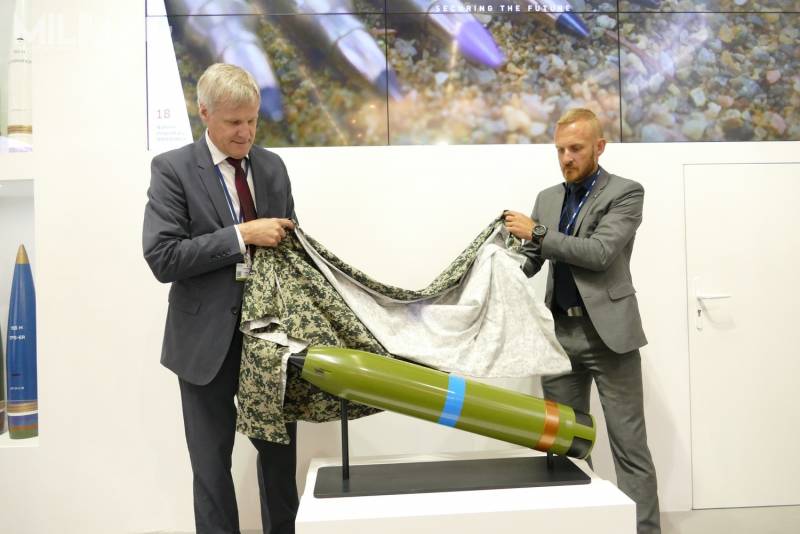
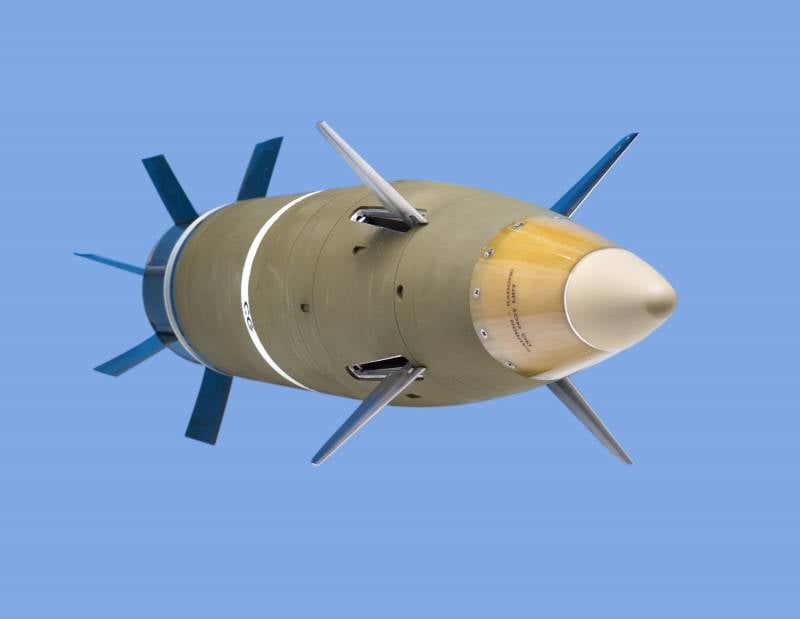
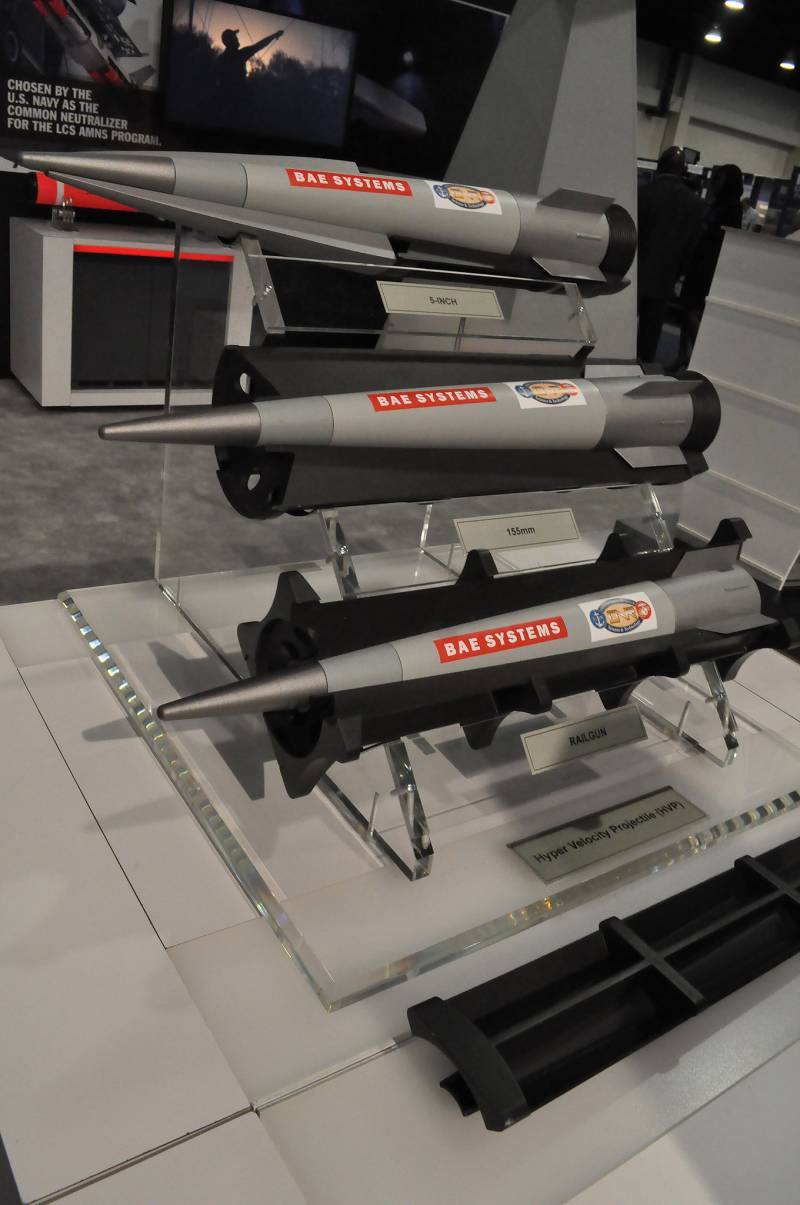
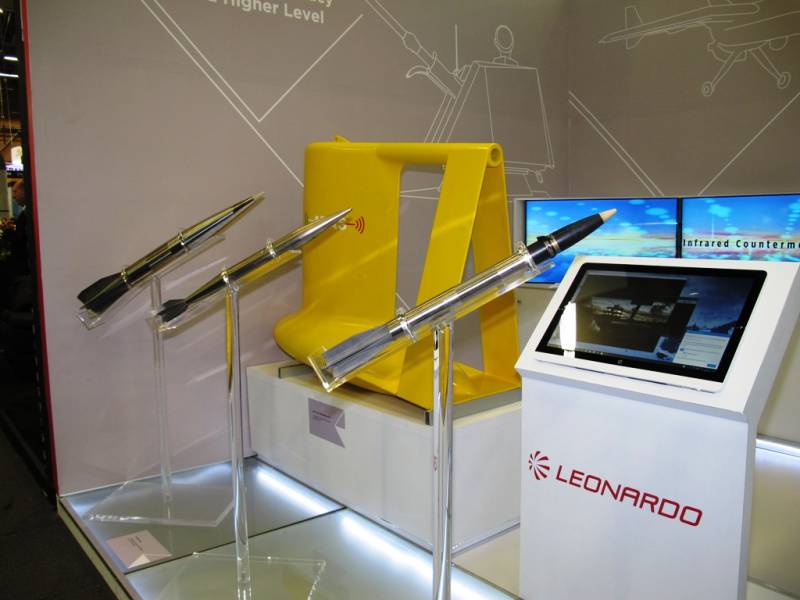
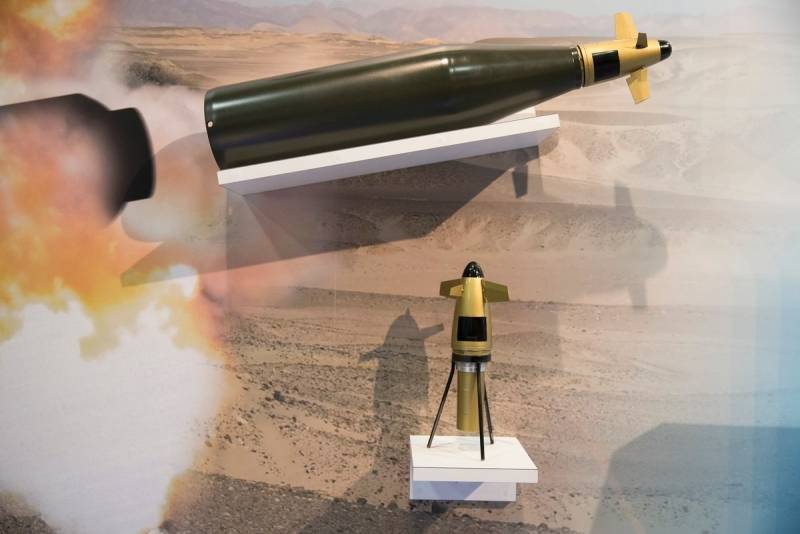
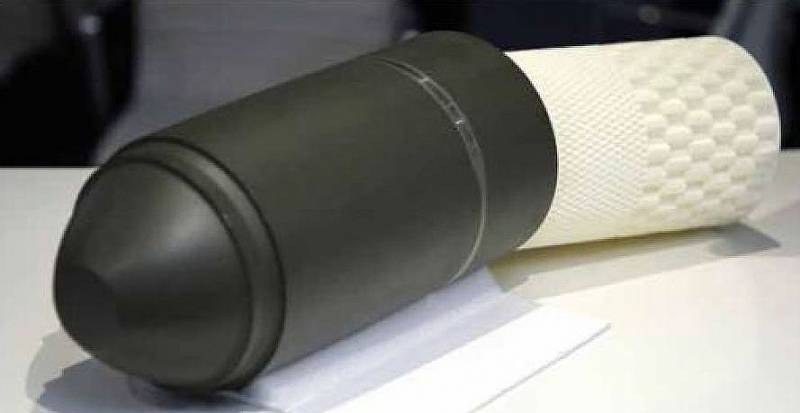
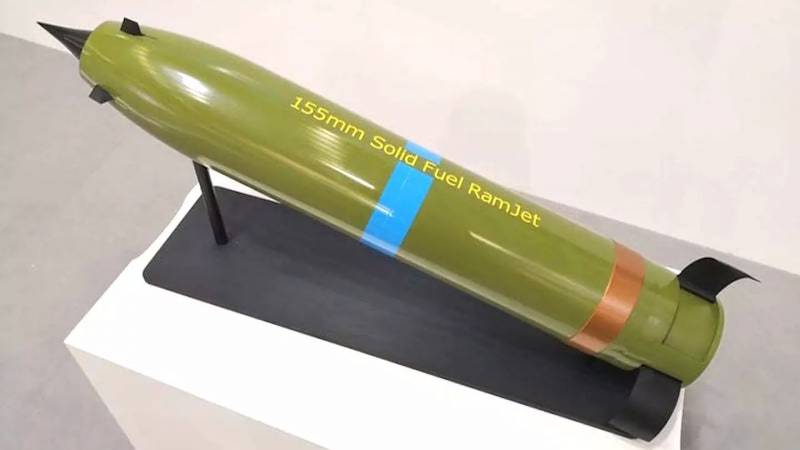
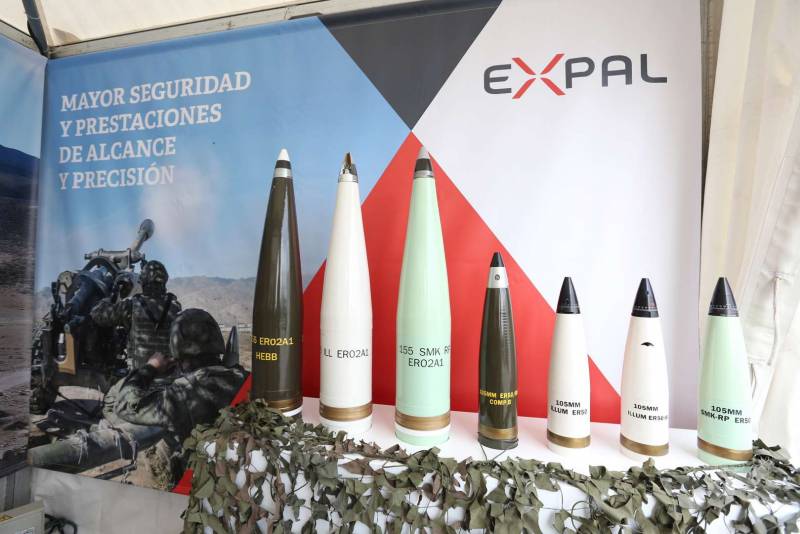
Information